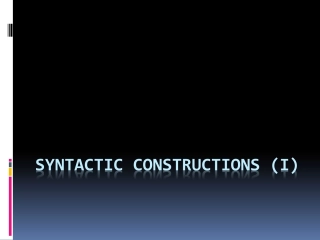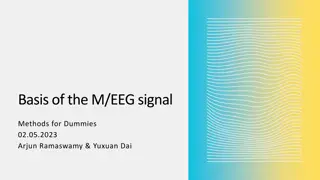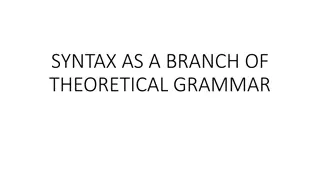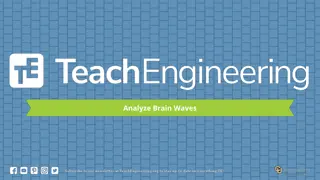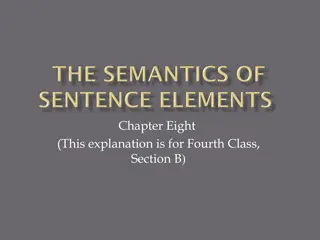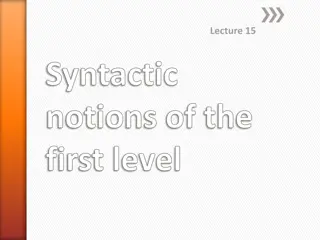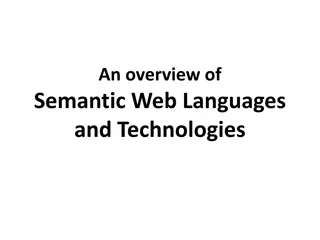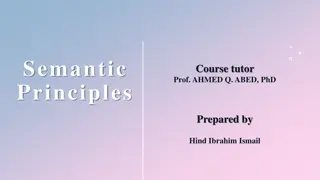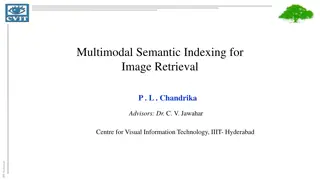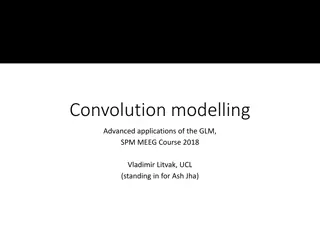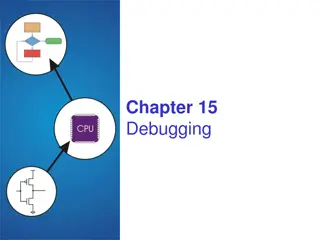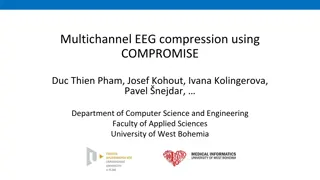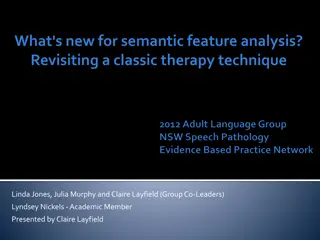EEG study of semantic and syntactic
This study by Marc M. Van Hulle explores the effects of semantic and syntactic violations in music on brain activity using EEG. The experiment involves dual priming with stimuli including Mozart and Brahms melodies. Preliminary results suggest that incongruencies between text labels and music tracks elicit stronger EEG responses. Further research is needed to fully understand the impact of congruent and incongruent conditions on brain responses in music perception.
Download Presentation

Please find below an Image/Link to download the presentation.
The content on the website is provided AS IS for your information and personal use only. It may not be sold, licensed, or shared on other websites without obtaining consent from the author.If you encounter any issues during the download, it is possible that the publisher has removed the file from their server.
You are allowed to download the files provided on this website for personal or commercial use, subject to the condition that they are used lawfully. All files are the property of their respective owners.
The content on the website is provided AS IS for your information and personal use only. It may not be sold, licensed, or shared on other websites without obtaining consent from the author.
E N D
Presentation Transcript
EEG study of semantic and syntactic violations in music Marc M. VAN HULLE : , , 4 5 2019 ( )
Experiment I Semantics of music 2
3. Semantics of music Stimuli (dual priming) Baseline Mozart Mozart ISI Hypothesis testing Brahms Mozart ISI Mozart ISI Brahms ISI = interstimulus interval primes 1& 2 target 120 melodies in total, played on violin by Tigran Maytesian 3
Stimuli 120 melodies 4 conditions, 30 melodies per condition: 1) prime 1= target, prime 2 = target 2) prime 1 = target, prime 2= target 3) prime 1 = target, prime 2 = target 4) prime 1 = target, prime 2 = target target = prime is congruent with target target = prime is non- congruent with target prime 1 = text label, e.g. Mozart prime 2 = music track, e.g., 2 rounds of recordings were performed & protocol adjusted (see further) 4
Participants & Hypothesis 5 musicians 1 non-musician Expected (hypothesis): Congruent conditions: no N400 EEG response Incongruent conditions: N400 EEG response 5
Baseline conditions Listening to music only: 30 melodies Watching the screen only: 30 names Semantic test results (previous slides) are tested against results of these baseline tests 6
Preliminary results EEG responses Position of electrodes on scalp 4 priming cases: text prime = target, music prime = target text prime = target, music prime = target text prime = target, music prime = target text prime = target, music prime = target The larger the dip the bigger the effect of incongruency target = prime is congruent with target target = prime is non-congruent with target 7
Preliminary Observations Showing text label, e.g. Mozart , and music track, e.g., sequentially is too hard (high memory load): no clear EEG responses Presenting text label and music track jointly: text label tends to dominate over music track, as shown by EEG responses Strongest response when both primes are incongruent with target, as shown by EEG responses More subjects need to be scanned (we only did a pilot study) 8
Experiment II Syntax of music 9
Stimuli - 192 melodies (8x 24 scales)(based on Bohlen-Pierce scale recordings of our collaborators in Harvard University, USA) - 96 correct melodies: ending on tonic chord - 48 melodies with subtle violation of the expectations (= in key notes) - 48 melodies with frank violation (=out of key notes) 10
Stimuli Each sequence: prime = 3 seconds (3 notes) target = 1000ms (1 note) Target is always the last note of the sequence 11
Participants tested until now 5 professional musicians 1 non-musician 12
Results: musicians As in previous research: Early Right Anterior Negativity (ERAN)/ N5 (Koelsch, 2001) However: we did not find significant amplitude differences between the congruent and non- congruent conditions for mild violations although this has been found in previous research (Koelsch, 2001, 2006) But we did find them for frank violations 13
Conclusions We are taking the first steps in unraveling with EEG the semantic processes involved in joint text & music priming on target responses And those involved in syntactic violations (deviant chords) Joret et al. (2017). How Does The Brain Process Mild Versus Strong Violations in Music? A Pilot Study Using Event-Related Potentials. 22nd International Conference on Digital Signal Processing (DSP 2017) (50th Anniversary Edition) (August 23-25, London, United Kingdom), pp. 1-5. doi: 10.1109/ICDSP.2017.8096146 14


